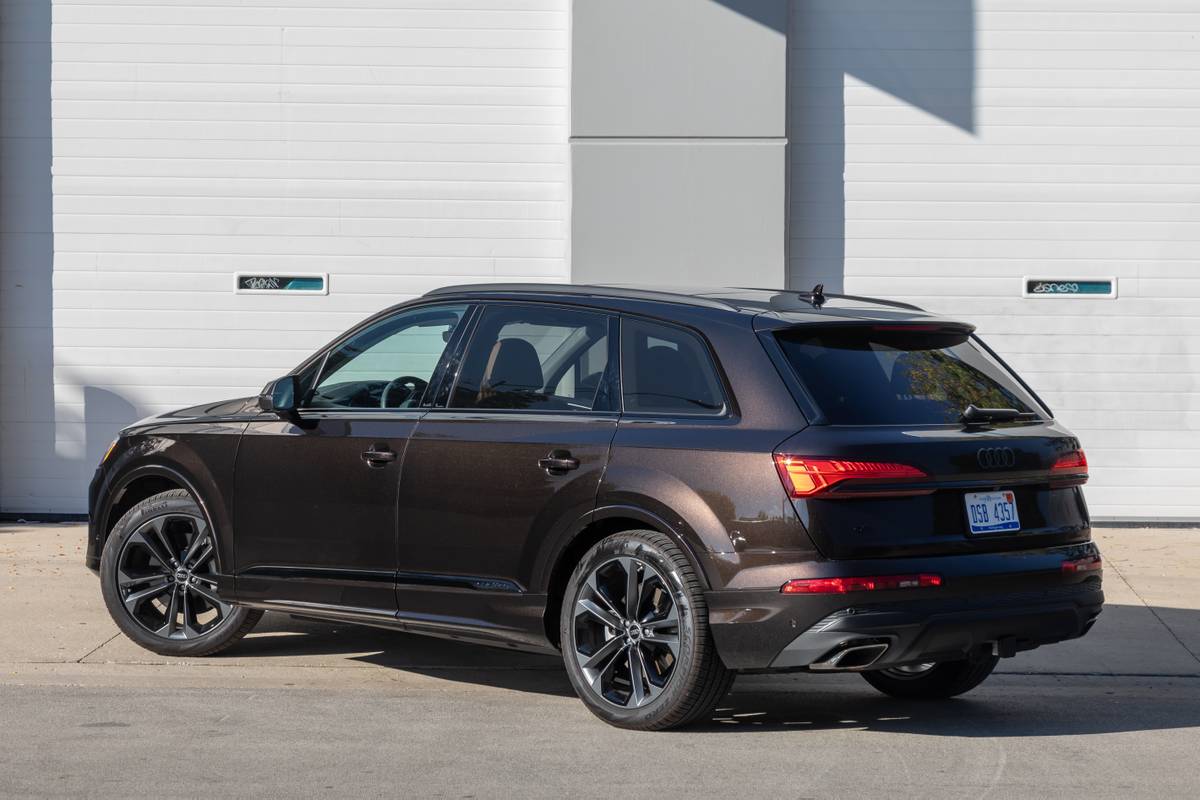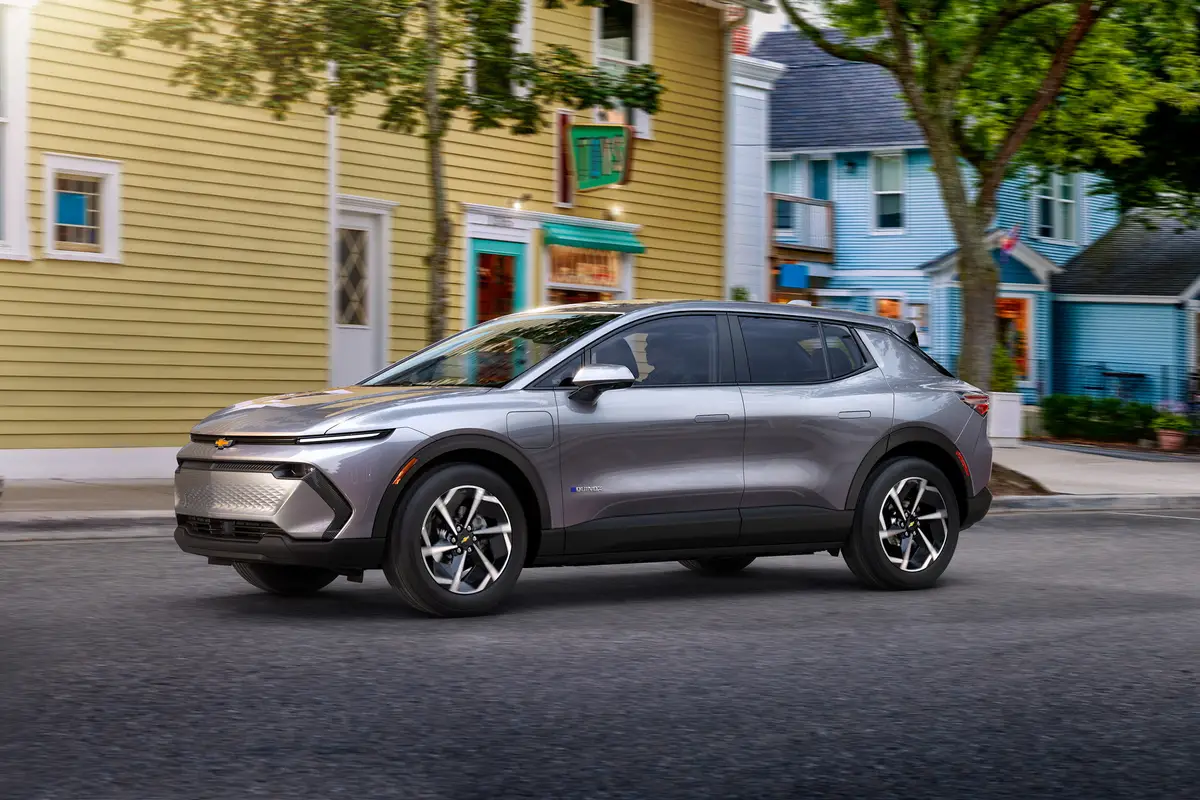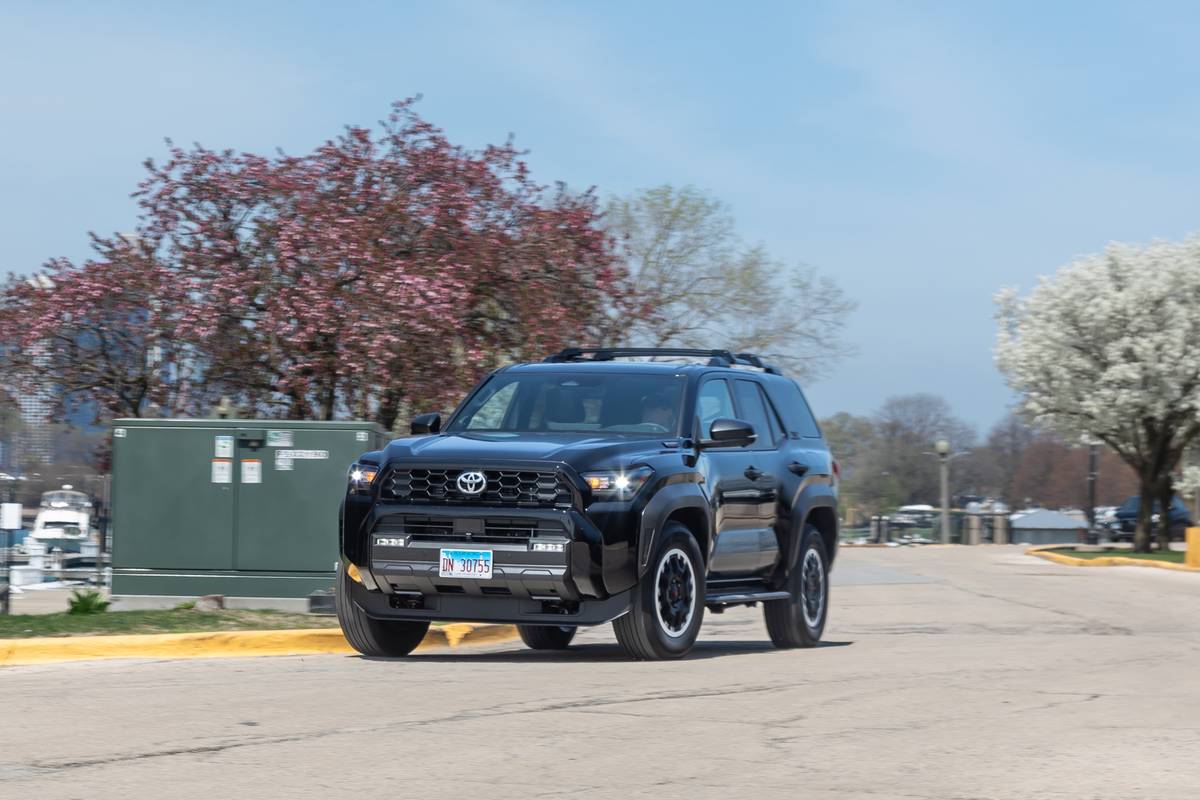Boston.com's view
A refrain from a David Crosby song came to mind after I had come off the highway, traveled a country road, and now tooled the elegant automobile down a steep hill toward a 90-degree turn:
It was one of those nights you drive by your own street.
And you wonder who’s runnin’
Your hands and your feet.
Crosby, no doubt, was referring to chemically induced bafflement — certainly not a car whose electronic wizardry seemed to make me wonder just what he had wondered.
I was in the 2003 Mercedes Benz E500 sedan, replacement for the E430 (the numbers denote the liters — 4.3, 5.0 of the engine), a car that does a lot for you, and, in one instance (see Annoyances), sometimes more than you might want.
Its Airmatic DC suspension system electronically monitors and adjusts spring stiffness, shock damping, and ride height.
Its accelerator, also electronic, "learns" what kind of driver you are, and if you are a pedal-to-the-metal type it holds its upshifts longer. If you are a conservative saver of gasoline, the upshifts come sooner, cutting engine revs.
Its power steering system is mechanical, yet it adjusts its feel according to your speed.
And its brakes, straight from the swanky SL, monitor cornering, speed, and the quickness and power with which you apply them — and adjust accordingly.
It is all meant to help harness a surging, powerful, smooth and elegant automobile that can be a sedate cruiser or Autobahn basher.
For 2003, the engine has been boosted from 4.3 to 5.0 liters. That means a horsepower hike from 275 to 302, a respectable boost, but not eye-catching. Eyes, however, do not propel a car. That’s why the accompanying torque boost, from 295 lb.-ft. to 339 lb.-ft, is a serious hike in performance.
The transmission is a 5-speed automatic with a click-left/click-right manual option.
It sits in a sleek body that slopes upward more sharply from grille to windshield than its predecessor, is an inch longer in its wheelbase and overall length, a half an inch taller. Yet its front slope and roofline make it look lower than the old 430. In fact, picture it with rear doors removed and you see a fine-looking long coupe.
The exterior sleekness is slickly matched by an interior redolent with plushness. The leather seats — 10-way power for both up front — are bolstered for legs and back, even in the rear, and are firm and receptive. The interior is horizontally bisected through dash and doors by a slash of polished aluminum. The dash is pliable because of a textured polyurethane sprayed over a soft subsurface. Even the lower dash, where the knees hit, is soft.
Ergonomically, the E500 avoids the baffling array of electronic controls that many drivers find confusing. The instrument cluster has three basic gauges and offers an easy view in a separate screen for trip computer, navigation, and radar-controlled cruise control and distan cing.
Head space and legroom are spacious and the back seat area has to be the roomiest in its class.
Mercedes has done an interesting thing with the E500, adding a wonderful bit of utility.
The car comes with an optional fold-down rear seat. Add the great space of the rear seat to the voluminous trunk space and that yields a respectable, enclosed cargo area — sort of like capping that pickup my father dreams of. Add to this the fact that the fold-down option also gives you a passenger seat that folds flat and you suddenly have the option to carry 8-foot two-by-fours in a Mercedes-Benz with 16 inches to spare. (If you’re saying, right now, "Wait, you could get 9-footers in there, skip to the next paragraph because you’ve obviously never been near a lumber yard).
The 5.0-liter V8 aluminum engine has two personalities: quiet, efficient, and quick; thundering, bodacious, and jet-like.
Cruise a country lane, or meander in the middle lane of th highway, and you need not even be aware of the engine. It’s out there working solidly for you.
Step out to roll in the high-speed commuter lane, or to pass, and it rumbles its approval, reaching back for torque to leap without a downshift, pushing ahead on horsepower to maintain stealthy speed.
The transmission assists you when you step out to pass by delaying bogging upshifts. It works in a similar manner on hills, holding the upshift while climbing, delaying the downshift while descending, thus eliminating the annoying up and down, up and down tendencies that plague many automatic transmissions in these situations.
A switch to Winter Mode tells the transmission to start out in second gear and to upshift at lower speeds — all to avoid wheel spin.
The steering gets heavier the faster you go, transmitting hard feel for carved turns, taking you for a ride on the rails of the Teutonic Railroad. If you go for the light feel-through-the-wheel of snappy performance cars, this steering is not for you. This wheel says, "Trust me," and you can.
The suspension has control arms, diagonal links, lateral links, air springs, shock absorbers, and antiroll bar up front. In the rear it features control arms, diagonal links, lateral links, and toe-control link along with air springs, shocks, and antiroll bar.
The shocks are cockpit adjustable, and the driver can choose a range of driving modes from sport to comfort. The Airmatic DC system has sensors fore and aft on the suspension, on the body, and solenoids on the shocks to monitor damping. Steering angle is also monitored, as is body roll.
It adjusts compression and rebound of the suspension system from soft to hard in a myriad of combinations to keep the car flat and smooth. Basically, this means the harder you push the car, the harder the suspension becomes.
The result is a soft cruise at highway speeds — even while passing — and a hard, flat carve through sharp corners at speed.
The brake system, also electronically monitored for speed, wheel angle, and brake pedal pressure adjusts itself wheel-by-wheel to keep the car moving straight and flat even in hard braking.
Eight air bags — front, side, and curtain bags front and rear — cushion passengers in the event of a crash.
Nice touch: That padded softness of the under dash. How often do knees come into contact with hard surfaces down there where we seldom look?
Annoyance: The "monitoring" touch I did not like came during that descent toward the 90-degree turn. I took my foot off the gas to let the engine do the braking as I always do when I approach this curve not far from my home. The system must have read this as a sign of impending doom as the "braking" system was automatically activated so strongly as to induce nose dive. All I wanted to do was get around the corner, not avoid a deer.
Latest news



